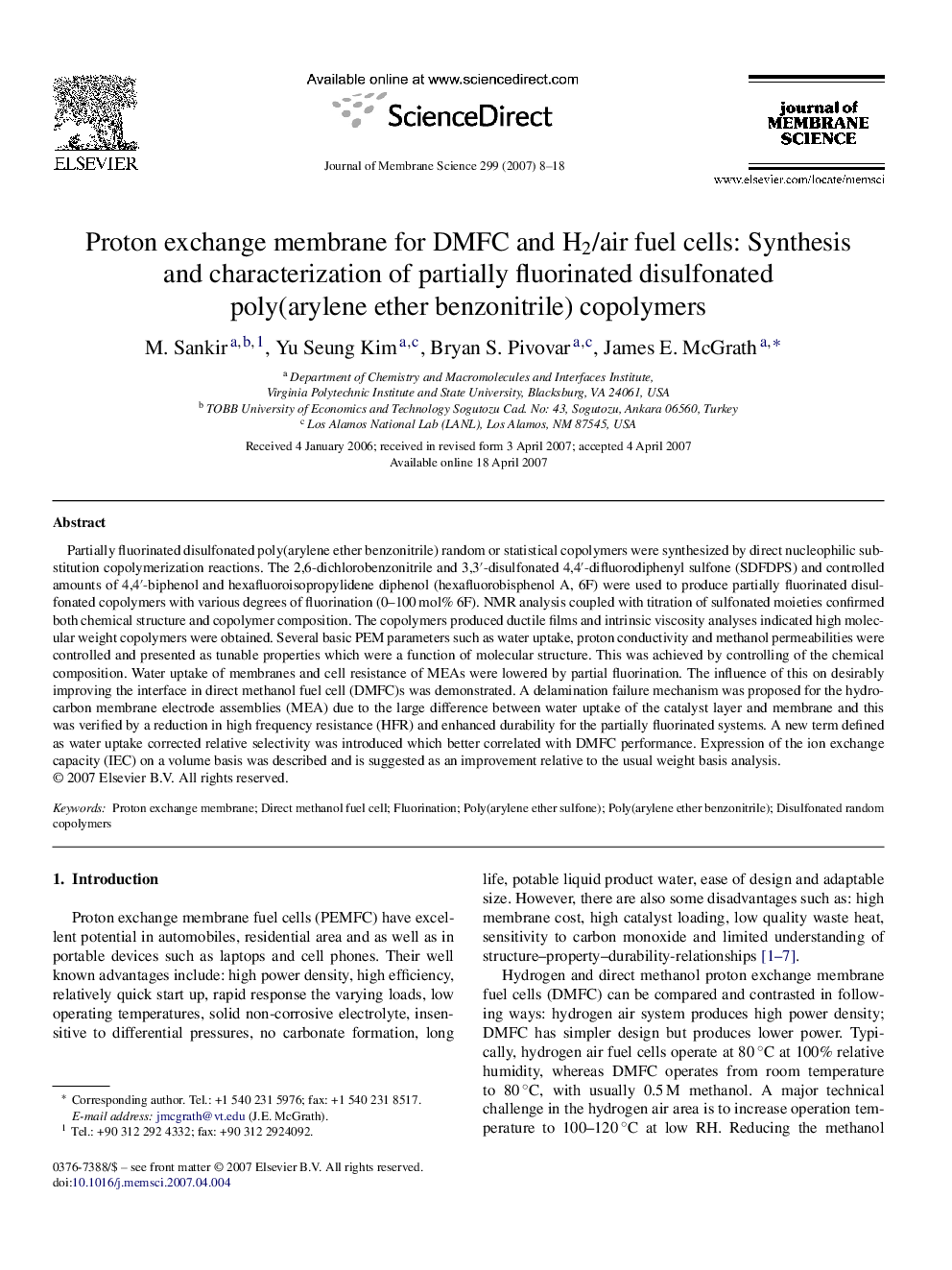| Article ID | Journal | Published Year | Pages | File Type |
|---|---|---|---|---|
| 638534 | Journal of Membrane Science | 2007 | 11 Pages |
Partially fluorinated disulfonated poly(arylene ether benzonitrile) random or statistical copolymers were synthesized by direct nucleophilic substitution copolymerization reactions. The 2,6-dichlorobenzonitrile and 3,3′-disulfonated 4,4′-difluorodiphenyl sulfone (SDFDPS) and controlled amounts of 4,4′-biphenol and hexafluoroisopropylidene diphenol (hexafluorobisphenol A, 6F) were used to produce partially fluorinated disulfonated copolymers with various degrees of fluorination (0–100 mol% 6F). NMR analysis coupled with titration of sulfonated moieties confirmed both chemical structure and copolymer composition. The copolymers produced ductile films and intrinsic viscosity analyses indicated high molecular weight copolymers were obtained. Several basic PEM parameters such as water uptake, proton conductivity and methanol permeabilities were controlled and presented as tunable properties which were a function of molecular structure. This was achieved by controlling of the chemical composition. Water uptake of membranes and cell resistance of MEAs were lowered by partial fluorination. The influence of this on desirably improving the interface in direct methanol fuel cell (DMFC)s was demonstrated. A delamination failure mechanism was proposed for the hydrocarbon membrane electrode assemblies (MEA) due to the large difference between water uptake of the catalyst layer and membrane and this was verified by a reduction in high frequency resistance (HFR) and enhanced durability for the partially fluorinated systems. A new term defined as water uptake corrected relative selectivity was introduced which better correlated with DMFC performance. Expression of the ion exchange capacity (IEC) on a volume basis was described and is suggested as an improvement relative to the usual weight basis analysis.
